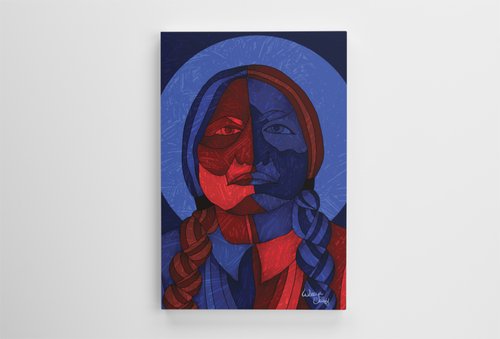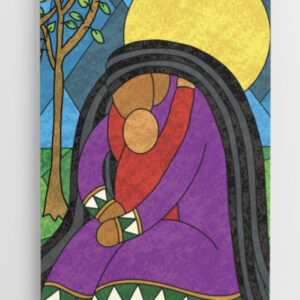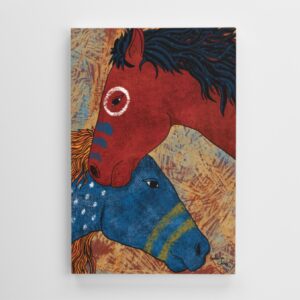Description
24” x 16”
Sitting Bull, a prominent leader of the Hunkpapa Lakota Sioux, indeed navigated the complexities of living in two distinct worlds: the world of the white settlers and the world of his Native American heritage.
Born in the early 19th century, Sitting Bull witnessed firsthand the encroachment of white settlers onto traditional Native American lands, as well as the subsequent conflicts and upheavals that ensued. He became a key figure in the resistance against the encroachment of the U.S. government and its policies, particularly during the period of westward expansion.
In the “white world,” Sitting Bull encountered numerous challenges and injustices, including broken treaties, loss of land, and attempts to assimilate Native American peoples into Euro-American culture. He witnessed the devastating effects of colonialism on his people, as their traditional way of life came under increasing threat.
However, Sitting Bull also remained deeply rooted in his Native world, preserving and upholding the cultural traditions, spiritual beliefs, and social structures of his people. He was a revered leader among the Lakota, known for his wisdom, courage, and unwavering commitment to defending his people and their way of life.
Despite the pressures and conflicts inherent in living between two worlds, Sitting Bull maintained a steadfast dedication to his identity and heritage. He refused to compromise his principles or abandon his people’s struggle for autonomy and sovereignty.
Ultimately, Sitting Bull’s life and legacy reflect the resilience and resilience of indigenous peoples in the face of colonization and oppression. He serves as a symbol of resistance, perseverance, and cultural pride, inspiring generations to come to honor their heritage and fight for justice and equality.






Reviews
There are no reviews yet.